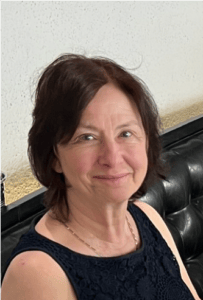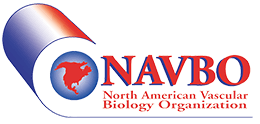
Rosemary Akhurst, Ph.D.
Professor of Anatomy, Helen Diller Family Comprehensive Cancer Center, University of California San Francisco; Director of UCSF HDFCCC Preclinical Therapeutics Core Facility; Member of UCSF Institute of Human Genetics; Member of UCSF Eli and Edythe Broad Center of Regeneration Medicine and Stem Cell Research; Member of UCSF Biomedical Science Program; Member of UCSF Developmental Stem Cell Biology Program.
Research Interests: My training was in biochemistry, molecular biology of cancer and developmental biology in the UK and USA, and I have held faculty positions both sides of the Atlantic. I am a strong believer that lessons learned in one field inform approaches in others, and my research is interdisciplinary, encompassing both vascular and cancer biology, and different technological approaches. My specific interests include signaling pathway regulation of vascular stability and remodeling; genetic disorders of the TGFB/BMP signaling pathways; arteriovenous malformations; tumor microenvironment; endothelial-immune cell cross talk; in vivo preclinical therapeutics.
NAVBO Activities: Member since 2005; Councilor – 2016-2019; Meritorious Awards Committee – 2015-2018; Session Co-Chair IVBM 2016; Co-Organizer – International Vascular Biology Meeting 2022. Active participant in Vascular Biology and IVBM meetings as attendee, speaker, and session chair.
Related Experience:Committee Member British Society of Developmental Biology 1996-1997; Committee Member AHA undergraduate summer scholarship program, 2006-2009; Host and moderator, AHA undergraduate annual round table discussions, 2007-2009; AACR Annual Scientific Program Committee Member (Tumor Microenvironment), 2010 and 2013-2015; Charter member, NHLBI Vascular Cell and Molecular Biology Study Section, 2011-2017; Vice-Chair, Global Research and Medical Advisory Board of Cure HHT 2019-present; Co-organizer of 14th International HHT Scientific Conference, 2022; Member of organizing team for International HHT Scientific Conference, 2024.
Vision for NAVBO
I am grateful to be nominated to run for President of NAVBO and would be privileged to serve if elected. My fascination with vascular biology began decades ago when my lab discovered the essential role played by TGF-beta signaling in early vascular development of the mouse embryo. As the years went by, I become increasingly committed to the translational applications of our research, while retaining a keen interest in curiosity driven science. I am a strong supporter of high-quality basic vascular biology research for which NAVBO is renowned and, if elected, I would nurture this aspect of NAVBO’s mission that forms such a strong foundation for trainees at early career stages.
I recognize the need to recruit the brightest and best into vascular biology research by piquing scientific interest at a young age and breaking down social barriers to entry. My lab has hosted talented high school students who have gone on to careers in STEM, and I would explore mechanisms for NAVBO outreach to high school students and undergraduates through various new programs. This is particularly important in the early post-pandemic era, following a time when budding scientists were limited by physical barriers to hands on learning.
NAVBO has made great strides in promoting diversity, equity, and inclusion. Through my own experience in this space, including involvement in UCSF’s undergraduate Summer Research Training Program (SRTP) for under-represented groups (URG), as well as acquisition of Federal and State research funds to promote training of URG scientists at all career levels (undergraduate, post-baccalaureate, post-doctoral), I feel prepared to expand NAVBO’s existing efforts in these areas.
NAVBO has always been a highly collaborative networking organization, and I would build on this foundation to further promote cross-cutting interdisciplinary collaboration to facilitate adoption of new technologies and the sharing and development of new concepts. To catalyze such interactions and break down barriers between disciplines, I would favor integrated rather than siloed sessions at Vascular Biology conferences, interdisciplinary networking sessions, and “Thinking Outside the Box forums.” I envisage discussion forums to address the problems met in promoting interdisciplinary research in North America, in terms of infrastructure, funding incentives, and recognition for team science.
With Bernadette at the helm and the dedication and hard work of many council members and former presidents, NAVBO has developed several outstanding online programs such as Webinars and Focus Symposia, Journal Clubs, and the Vascular Biology Open Forum, that have transformed the way that NAVBO members engage and communicate throughout the year. I would sustain and hope to build on this framework for dissemination of information and networking, and I would explore ways to strengthen NAVBO scientifically and financially with the goal of supporting innovative research and researchers in vascular biology.
